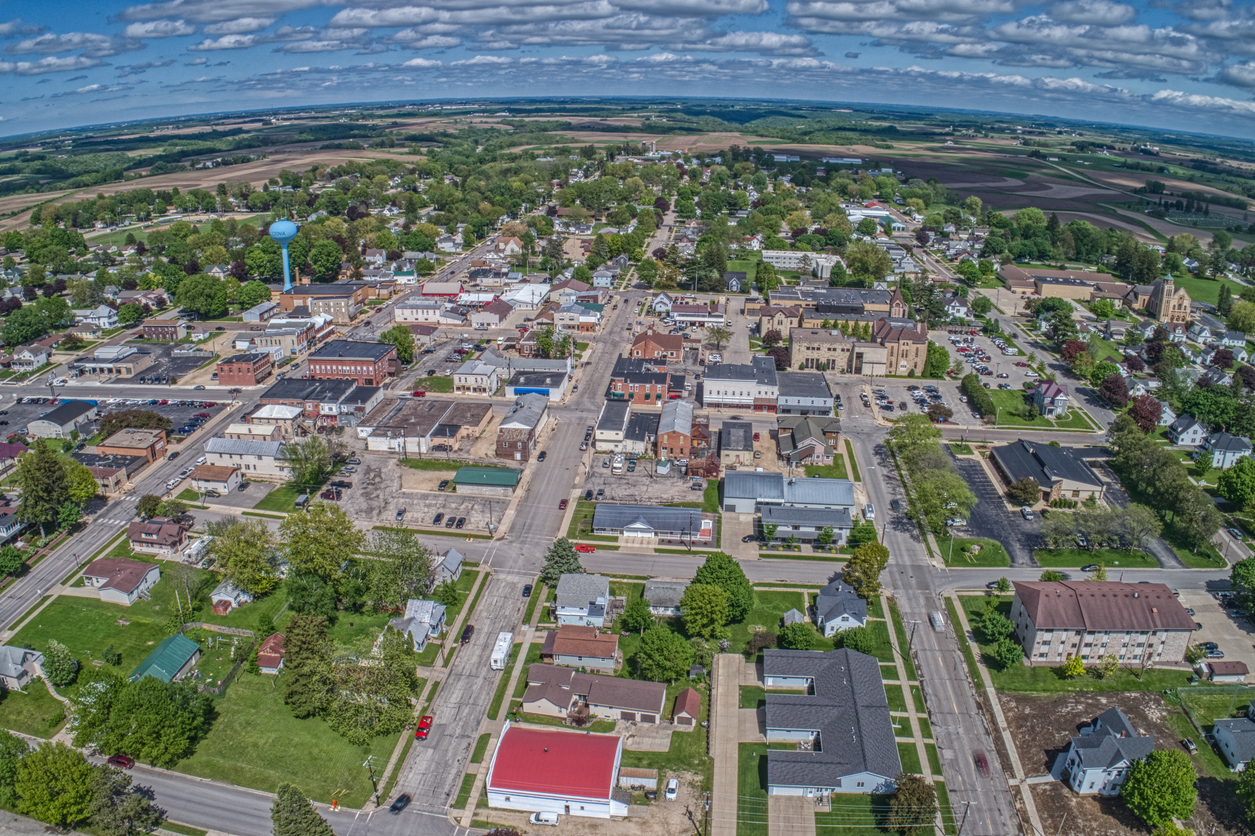This content conveys general information. Do not use it as a substitute for legal advice. Any attorney general opinions cited are available from the League’s Research staff.
Basis for land use ordinances
The legal foundation for city land use ordinances in Minnesota is the 1965 Municipal Planning Act. (Minn. Stat. §§ 462.357 – .365). Its purpose is to provide municipalities with the necessary powers, and a uniform procedure, for conducting and implementing municipal planning.
The Legislature amends the act from time to time. City leaders should make sure their zoning and subdivision ordinances are consistent with the Municipal Planning Act and other state and federal laws. They should also make sure their ordinances are consistent with:
- Court decisions.
- Staff interpretations.
- Unwritten city policies (practices).
- Comprehensive plans.
- Other community goals.
Consult the city attorney about any changes that may be needed. This discussion will outline a few common areas to look out for when it comes to the city’s land use ordinances.
Time limits
Minnesota has an “automatic approval” statute, often referred to as the “60-day rule” (Minn. Stat. § 15.99). It says a city must approve or deny a written request related to zoning within 60 days, or it is deemed approved. The city council must make its final decision within those 60 days. An advisory or appealable decision made by a planning commission or other body does not qualify as a final decision.
Some city zoning ordinances may have built-in time limits for acting on requests that exceed the timeline permitted by the 60-day rule. Timelines should either not be included in land use ordinances or should conform with the 60-day rule.
Learn more about the 60-day rule in the Zoning Guide for Cities
Voting thresholds
With one exception, state law requires only a simple majority of the council to adopt or amend a zoning ordinance.
The exception is a change in the zoning classification of a district from residential to either commercial or industrial. This action requires a two-thirds vote of the council (Minn. Stat. § 462.357, subd. 2).
Prior laws called for a supermajority (two-thirds) vote of the council to adopt or amend a zoning ordinance. Cities should remove any outdated supermajority requirements from their land use ordinance provisions.
Land use fees
The Legislature occasionally changes Municipal Planning Act land use fee provisions. Cities should make sure their land use fee provisions and practices meet current state standards. Under current law:
- A city may prescribe fees sufficient to defray the costs incurred in reviewing, investigating, and administering a land use application.
- The fees must be fair, reasonable, proportionate, and have a nexus to the actual cost of the service.
- Land use fees generally must be established by ordinance ( Stat. § 462.353, subd. 4).
Cities that collect land use fees must adopt management and accounting procedures to ensure fees are maintained and used only for the purpose for which they are collected.
State law also has requirements about so-called park dedication fees. Among other requirements, park dedication fees must be placed in a special fund. The fund may be used only for acquisition or improvement of parks and recreational facilities. It may not be used for their ongoing operation or maintenance. (Minn. Stat. § 462.358, subd. 2b).
Learn more about land dedication in the Subdivision Guide for Cities
Nonconformities
Nonconformities are uses, structures, or lots that do not comply with the current zoning ordinance. Legal nonconformities are those that were legal when the zoning ordinance or amendment was adopted. Legal nonconformities generally have a statutory right to continue.
Continuance rights of legal nonconformities include repair, replacement, restoration, maintenance, or improvement, but not expansion. Some cities may recall times that continuance rights could be lost if the property is destroyed by greater than 50% of its market value by fire or other means. Current law allows all restorations if a building permit is applied for within 180 days of the property damage (Minn. Stat. § 462.357, subd. 1e(a)(2)).
Some city zoning ordinances may have provisions to phase out nonconformities over time through a process called amortization. State law now prohibits this process except for adult uses (Minn. Stat. § 462.357, subd. 1c).
For more information about nonconformities, see Land Use Nonconformities
Variance standard
Cities should ensure their ordinance provisions for granting variances agree with the standard provided in the Municipal Planning Act, A variance is a permitted departure from strict enforcement of the zoning ordinance as applied to a particular piece of property. The city can grant a variance if enforcement of the zoning ordinance would cause the owner “practical difficulties.”
“Practical difficulties” is the legal standard set by state law (Minn. Stat. § 462.357, subd. 6). “Undue hardship” was the previous name for the practical difficulties standard. Minnesota cities must apply the practical difficulties standard when considering applications for variances.
To constitute practical difficulties, a variance application must meet all three of the following conditions:
- The property owner proposes to use the property in a reasonable manner.
- The landowner’s problem is due to circumstances unique to the property not created by the landowner.
- The variance, if granted, will not alter the essential character of the locality ( Stat. § 462.357, subd. 6 (2)).
Economic considerations alone cannot constitute practical difficulties. Variances are only permitted when they are in harmony with the general purposes and intent of the ordinance, and when the terms of the variance are consistent with the comprehensive plan (Minn. Stat. § 462.357, subd. 6 (2)).
For more information about variances, see Land Use Variances
Conditional uses
A conditional use is a land use the city permits in a zoning district only when certain standards are met. Conditional use permits (CUPs) are authorized by state law (Minn. Stat. § 462.3595).
Cities may only grant CUPs for uses specifically listed in the zoning ordinance as conditional uses in a particular zoning district. If a particular use is not designated by ordinance as a conditional use, then arguably the city may not issue a CUP. Cities should be sure to detail both the general and specific standards and criteria for designated conditional uses, as required by the statute.
Cities should also:
- Impose only reasonable conditions based on factual evidence in the public record.
- Use an interim use permit, not a conditional use permit, to place time constraints on a use.
- Remember a CUP remains in effect as long as the conditions are observed, even if there is a change in land ownership ( Stat. § 462.3595, subd. 3).
For more information about conditional uses, see Land Use Conditional Use Permits
Manufactured homes
City ordinances should agree with state law on the ability to locate manufactured homes on residential lots.
Complying with manufactured home building code
Under state law, no city zoning regulation may prohibit manufactured homes that are built in conformance with the manufactured home building code and comply with all other zoning ordinances (Minn. Stat. § 462.357, subd. 1).
Cities can apply architectural and aesthetic requirements to manufactured homes only if the same requirements also apply to all other single-family homes in the zoning district.
Cities cannot require a manufactured home that complies with the manufactured home building code to comply with any other building, plumbing, heating, or electrical code, or any construction standards (Minn. Stat. § 462.357, subd. 1).
Not complying with the manufactured home building code
In contrast, manufactured or “mobile” homes that do not comply with the manufactured home building code are not covered by the state statutory protections. They may be restricted or prohibited within a city (Minn. Stat. §§ 327.31 – .35). Homes built before July 1, 1972, likely do not comply with the code. Existing noncompliant mobile homes may have continuance rights as legal nonconformities.
Manufactured home parks
Cities should ensure their ordinances are consistent with state law and rules on manufactured home parks. A manufactured home park is, by law, a conditional use in any zoning district that allows the construction or placement of a building used or intended to be used by two or more families (Minn. Stat. § 462.357, subd. 1b).
The State Department of Health licenses manufactured home parks. Cities may not license them (Minn. Stat. § 327.27.26). In their zoning ordinances, cities should establish CUP standards for manufactured home parks that are consistent with the state’s licensing rules (Minn. R. 4630.0200 – .2210).
Other considerations
There are other ways in which a city land use ordinance may fall out of harmony with state law. Cities can use this list of common areas to look out for as they begin reviewing and updating their land use ordinances.
Cities should work closely with their city attorney, zoning administrator, and planning commission to review land use ordinances for consistency with current law or practice.






